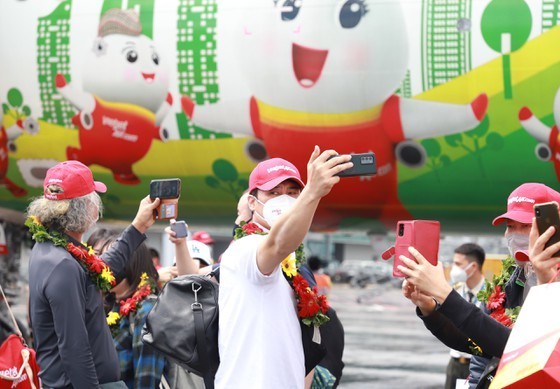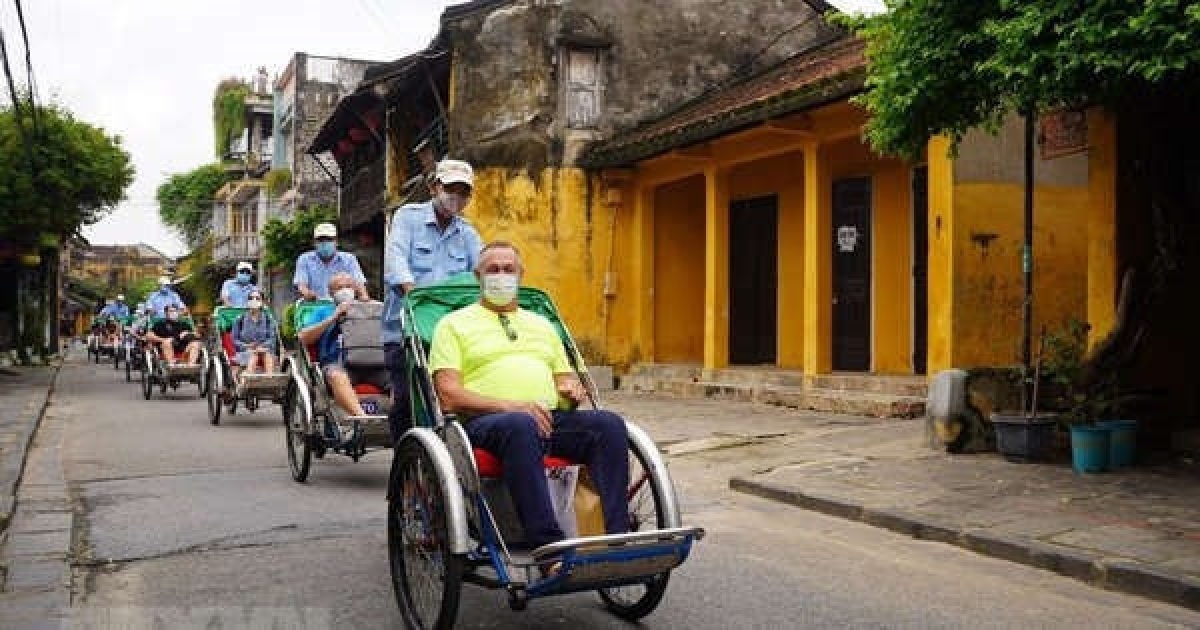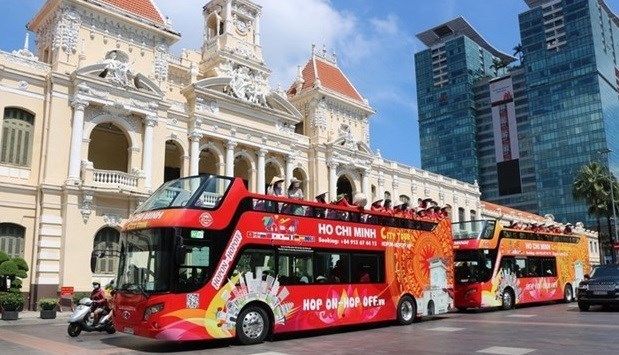
Oxalis’ CEO Nguyen Chau A at a recent workshop said the news about the failure to connect related parties to open the Dong Hoi – Chiang Mai air route some years ago to receive foreign travelers again shows that complicated procedures are still hindering the development of the tourism sector.
A said that Oxalis supported Quang Binh province to set up the air route but it existed for only one year because the company could serve only Thai and Vietnamese travelers who did not need visas to travel.
Meanwhile, there was no regulation on granting visas to international tourists going through domestic airports. As a result, Oxalis lost a high number of European tourists from Chiang Mai.
He urged management agencies to grant visas online to attract travelers. He also wants to see the procedures simplified, and visas valid for one year.
Cao Tri Dung, Chair of Da Nang Tourism Association and Chair of Vietnam Travelmart, noted that the resumption of visa waiver has not been done for countries which once enjoyed visa waivers prior to 2019. As a result, his firm has to work with agencies on each case.
Tran Dinh Thien, a respected economist, said that complicated procedures are one of two problems of Vietnam’s tourism. Vietnam pursues a policy of ‘making friends with all countries’, but it still cannot turn this into strength to develop tourism.
Travel firms are concerned about the inconsistency of policies. The biggest fear for travel firms is the unpredictability of policies: they are told to open today and asked to close their door tomorrow.
Unsustainable market
| Covid-19 in the last few years brought the world’s tourism to its knees. Current opportunities exist but if Vietnam starts the new race later than other countries, it will lose. |
Mr A listed a number of factors that explain why Vietnam’s tourism still cannot develop in a sustainable way, especially in receiving inbound travelers.
In 2019, Vietnam received 18 million travelers, but it relied on China and South Korea (60 percent of market share), followed by Japan and Taiwan (5 percent each), and Europe (2 percent).
The heavy reliance on a few markets puts Vietnam at a high risk. This has happened with the Chinese market: when the Chinese Government tightens control to fight the pandemic, Vietnam cannot receive travelers from the market of more than 1 billion people.
Meanwhile, Thailand receives 40 million travelers a year, 30 percent of which is from China, while the remaining are from many other countries, with 10 percent on average. Thailand’s tourism has developed in a sustainable way.
He said that Vietnam pays too much attention to B2B (business to business) model (80 percent), i.e. businesses creating tours and selling products to foreign travelers who do marketing. Vietnam’s firms should serve travelers under the programs agreed to with their foreign partners.
The advantage of the B2B model is that Vietnam doesn’t have to do marketing and sales. However, the disadvantage is that they rely on partners.
It’s estimated that only 20 percent of Vietnam’s travel firms can apply the B2C (business to customer) model, i.e. travel firms creating products and selling products directly to travelers and bringing them to Vietnam. The figure is 40 percent in Thailand.
Following the B2B model, many travel firms have shut down when their foreign partners closed or disappeared. Many others lost markets if their foreign partners stopped cooperation.
A said he hopes that large corporations with powerful financial capability will help advertise the Vietnamese brand, and approach targeted markets without intermediary partners.
If Vietnam doesn’t have a new strategy and reasonable policies, it will be defeated by rivals, not only in the number of travelers, but also as a destination.
Can Van Luc, chief economist of BIDV, said that 35 percent of the world’s tourism has recovered, while Vietnam is still slow in reopening tourism. Vietnam’s revenue from tourism dropped by 60 percent in 2020, and another 15-20 percent in 2021. So, it will take at least two more years for Vietnam to see the golden days of 2019 returning.
Nguyen Sy Dung, a senior expert, said Vietnam needs to reopen the country.
“It’s necessary to simplify the procedures further and integrate procedures, so that foreign travelers only have to ‘knock one door’ when they need to solve a problem,” Dung said.
Regarding marketing and tourism promotion activities, Vietnam has been mostly doing this via trade fairs instead of popularizing the national destination. So it still cannot approach many travelers in targeted markets. The budget for trade fairs is also modest.
“Why doesn’t Vietnam think of organizing one international event every month, like the Da Nang organizes firework festival?” Thien said.
“This kind of event will create regional and local competitions, but have international stature, attracting foreign travelers to Vietnam. This way of promoting tourism will create a new vision about Vietnam,” he said.
|
No haste over reopening
To recover the tourism industry, Deputy General Director of the Vietnam National Administration of Tourism (VNAT) Ha Van Sieu emphasized ‘opening’. He believes the best support is opening, from road border gates to airways. The diplomatic sector also needs to help bring foreign travelers to destinations. Meanwhile, Deputy Prime Minister Vu Duc Dam said in order to ‘open’ tourism, Vietnam needs to fight the pandemic effectively to prepare to receive guests. “The opening today and closing tomorrow is more dangerous than only opening after thorough preparation,” he said. |
Ngoc Ha

Vietnam to welcome back foreign tourists via sea, road: ministry
The Ministry of Culture, Sports and Tourism plans to welcome back international tourists via sea route and roads in the time ahead, after piloting the “vaccine passport” programme on the air route.

Southern localities make efforts to diversify tourism products in ‘new normal’
The tourism sectors of southern provinces and cities are exerting efforts to reform and diversify products to attract visitors while ensuring safety in the ‘new normal’, as the 2022 New Year and traditional Tet (Lunar New Year) holidays approach.
